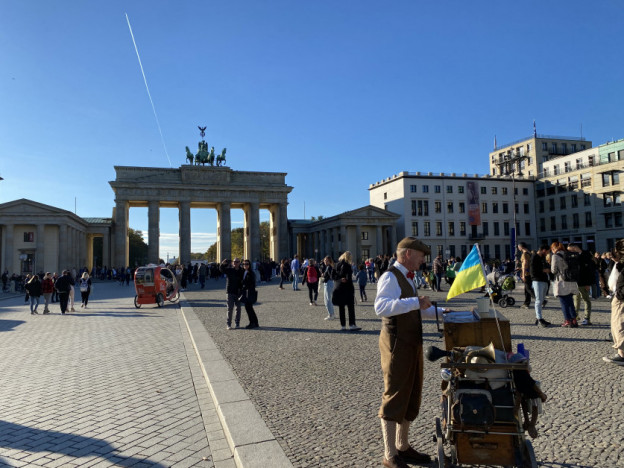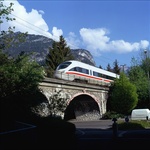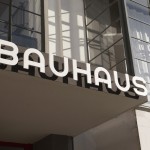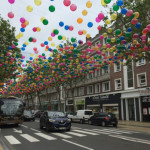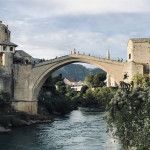Andy Mossack visits some Berlin secret places as he explores the less-travelled parts of Germany’s capital.
Berlin is such a huge city. I have been numerous times and each visit brings something new. Not surprising really when you realise it is nine times bigger than Paris, a third of it is forest, parks, gardens and lakes, there are over 500 km of rivers and canals, and its history has literally been world-changing. From a smouldering ruin in 1945 and a city divided until 1989, to the economic and technological powerhouse it is today, Berlin manages to ignite my imagination like no other city.
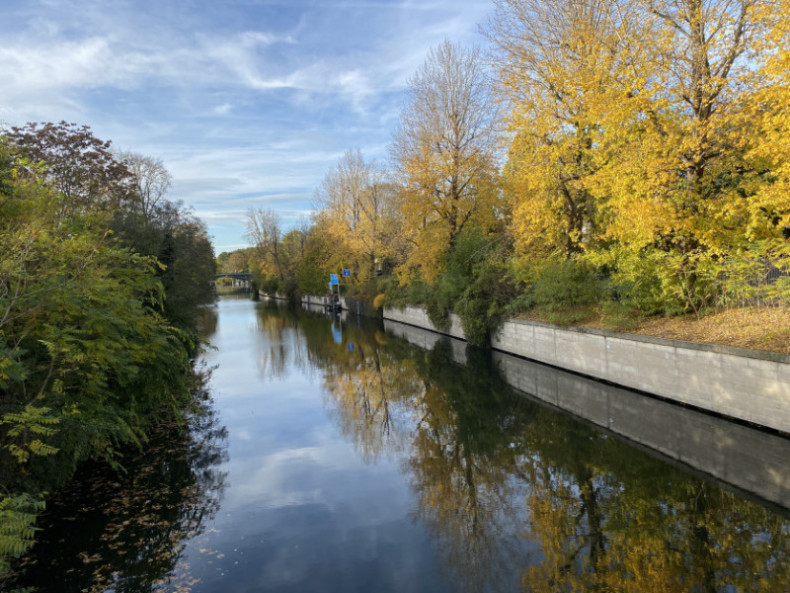
But if, like me, you’ve been a frequent visitor and ticked off Checkpoint Charlie, the Reichstag, the Brandenburg Gate, the Berlin Wall Memorial, Museum Island, the Jewish Museum, the Holocaust Memorial, and the East Side Gallery (an art-filled tableau covering the largest remaining section of the Wall), what do you for your next visit?
Berlin has many places that still remain off the tourist radar but yield yet more layers of intrigue. Here are some of my suggestions to find some Berlin secret places.
Tempelhof Airport
Lying dormant since it ceased operations in 2008, this 1,000-acre site was the epicentre of so much of the history that played out during WW2 and the Cold War. In many ways, it was as divided as Berlin, an example of both good and evil. On the evil hand, it was built to be a global symbol of Nazi power after Hitler ordered architect Ernst Sagebiel to expand it into the biggest airport in the world in 1935. The colossal terminal building and hangars curving out either side of it are like the wings of a giant eagle in flight.
The irony is it was never used for passengers during the Nazi years, instead, the Luftwaffe used it to build and fly Stuka dive bombers built by a production line of forced labourers. On the good hand, the American Air Force was based here from 1945 to 1993 with a team of over 2,000 personnel. When the Russians blockaded all road, rail and water access to West Berlin in 1948, Tempelhof provided the air corridor for airlifting vital food fuel and medical supplies for almost a year until the blockade was finally lifted.

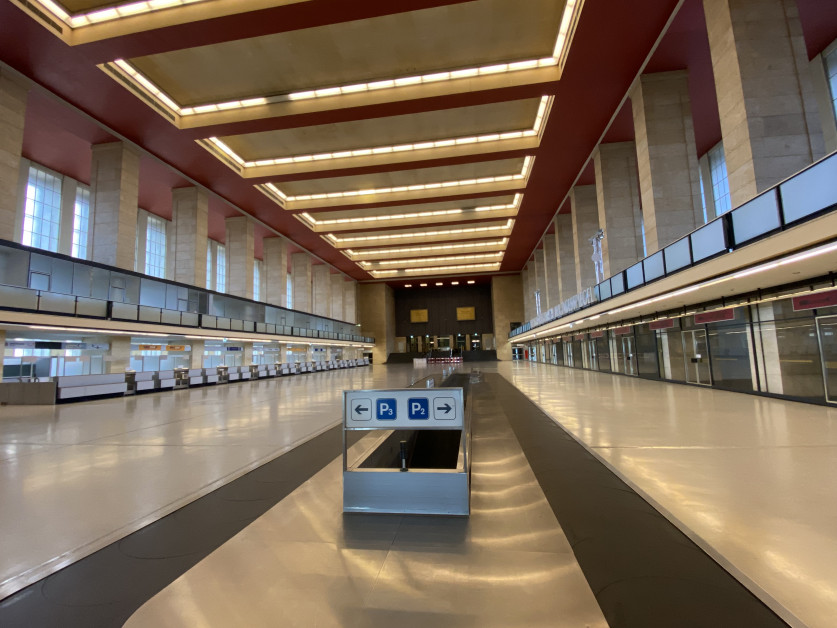
Its military and civil history has left behind a remarkable place to explore and there are daily guided tours around much of its interior. My guide was Dr Elke Dittrich, an architectural historian who has researched Tempelhof for over 20 years and even wrote a book about it, so I was in the right hands. The colossal passenger arrivals and departures hall was like a 60s-era snapshot in time. The long line of check-in desks was eerily silent, but it took very little to imagine it in its heyday. We walked past an International Departures sign and went down onto the airfield apron. There is just one aircraft standing here now, a US Airforce plane used during the airlift supply operations.


The rest of the huge airfield and its two runways stretched out before me. Berliners now use it for outdoor recreation; walkers and runners and picnics on the grass, while the runways make excellent tracks for bikes and skateboards.
As we walked out further, I could see the immense span of giant hangers stretching out either side of the terminal building, a factor that made Tempelhof unique in the world of aviation. Back in the terminal, we used an old elevator to get to higher levels. Through abandoned public restaurants and a few US air force rec areas, even a full-size basketball court with the Berlin Braves USAF logo frozen in time on the centre circle. Eerily fascinating.

Elke asks me “Would you like to see some of the basement tunnels and air raid shelters?” How could I refuse? As we walked down into the airport’s depths, I had to ask “Was there a tunnel from here to Hitler’s bunker?” Elke: “it’s one of those urban legends, but I can tell you, categorically, there was no tunnel.” But there were many historical remnants of the Nazi era, and the underground air raid shelters, not unlike prison cells, were a grim reminder of wartime Berlin. Tempelhof is an unmissable attraction.
Berlin From Below Tour
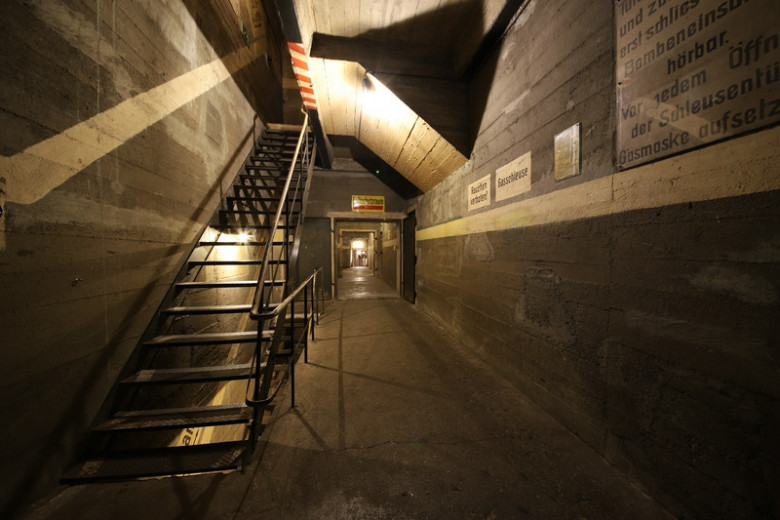
Another brilliant subterranean experience is courtesy of the Berlin Underworlds Association, a group of enthusiasts and experts who officially explore Berlin’s underground architecture to make it accessible to the public. A service it has carried out for twenty-five years and is still ongoing. It offers numerous guided tours from bombed flak towers to tunnels dug from east to west under the Berlin Wall. I tried the Dark Worlds Tour, exploring the labyrinth of bunkers that were turned into air-raid shelters below the Gesundbrunnen subway station during WW2. This was an underground world that was so fearful of poison gas attacks, it had to be made airtight resulting in a limited amount of breathable air for the Berliners using it. Even more terrifying was that thousands of people down here had little knowledge of how much air they had left.
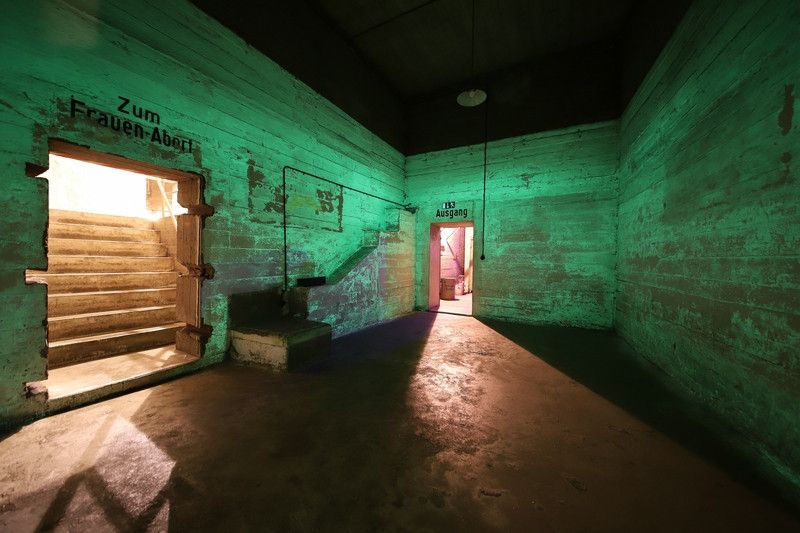
During the two-hour tour, there are many remarkable artifacts found during the excavations as well as luminous paint around the bunker walls which remains active. How do I know it’s active? You’ll have to do the tour and find out! There’s also a permanent Germania exhibition at the Association’s underground centre in Gesundbrunnen that describes Hitler’s failed plans for rebuilding Berlin into the ultimate metropolis of Germania complete with underground highways.
Panorama Punkt

Potsdamer Platz has been transformed from a desolate waste ground on both sides of the Wall to one of Berlin’s biggest entertainment hubs. And what better way to see it than from a bird’s eye view atop the Kollhoff Tower, one of the city’s tallest buildings. You get there aboard the fastest elevator in Europe covering 8.5 metres a second. A mere 20 seconds to travel the 24 floors to the 360-degree panorama of Berlin far below. There’s a well-stocked café up there and a permanent photo exhibition of the history of Potsdamer Platz. I was there just as the sun was going down, which brought a whole different dimension to the stunning view, turning from golden hues into the neon-lit world of Berlin at night.
Chisel out your own chunk of the Berlin Wall

Since its fall on the 9th of November 1989, bits of the Wall have turned up all over the world. The Westin Grand Hotel, (itself a piece of East Berlin history as it was once owned by the GDR) purchased a giant piece of it, so heavy it had to be helicoptered into place outside the hotel entrance, Guests are given the opportunity to chisel off their own piece to take home. So, on a reasonably mild afternoon, I donned a helmet, eye protectors and gloves, grabbed a hammer and chisel and bashed myself a piece of history. Full disclosure here, it took plenty of hefty attempts to get just a few fragments. That Wall is hard! Nevertheless, I got my pieces in a presentation box with a certificate of authenticity, probably the best souvenir of Berlin I could wish for.
Otto Weidt’s Workshop for the Blind.
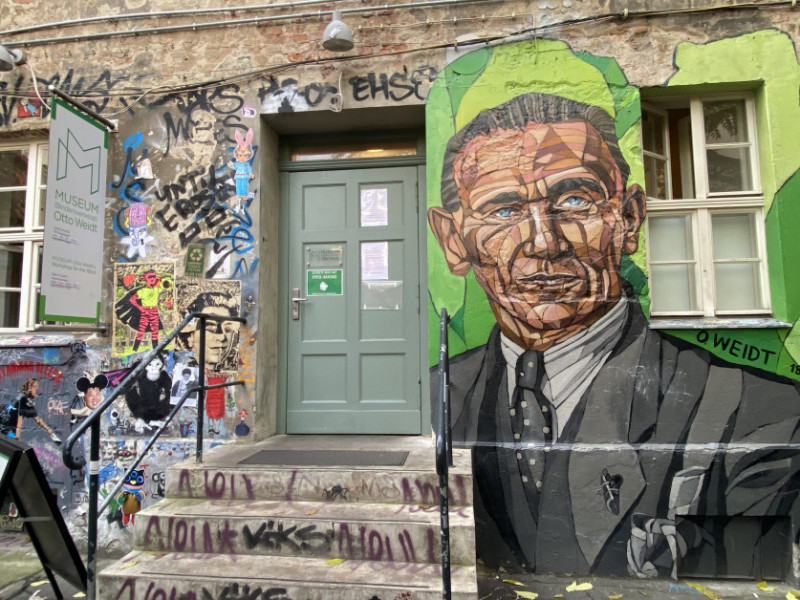
Hidden in the network of tiny courtyards that make up Hachescher Hofe, a very hip neighbourhood in East Berlin full of designer shops and restaurants, lies the former workshop of Otto Weidt, a man who some have coined Berlin’s Schindler. Weidt, a man whose own eyesight was failing, owned a broom and brush business and employed thirty Jewish blind and deaf workers, principally because they used feel and touch to make the best quality brushes. When Jewish citizens began being rounded up and deported, Weidt either hid his workers in the back of his shop during raids or bribed officers and falsified documents.

His efforts were recognised by Israel’s Yad Vashem as a ‘Righteous Man of the World’s Nations’, an honour given to non-Jews who risked their lives saving Jews during the Holocaust. His small factory is now a museum and it’s a fascinating story. Make sure you check out the small room at the back where his workers were hidden from the Gestapo. It’s ironic that this once working-class neighbourhood is now one of Berlin’s trendiest areas.
New Museums
I mentioned Museum Island earlier as a must-see on a first visit to Berlin, even more so by 2026, when all five museums will be connected to each other via a tunnel network. But this is a city where 170 museums await, with new ones coming on stream every year. There are museums in Berlin that cater for just about anything you can think of, from the Disgusting Food Museum to the Museum of Unheard-of Things.
I even found an Ampelmann shop on Unter den Linden, (probably the fanciest boulevard in Berlin), dedicated to the stick figure symbol used on the city’s pedestrian traffic light system. The green and red-hatted male figures have attained cult status, particularly in east Berlin and you can buy t-shirts, mugs, and fancy art pieces. Go figure.
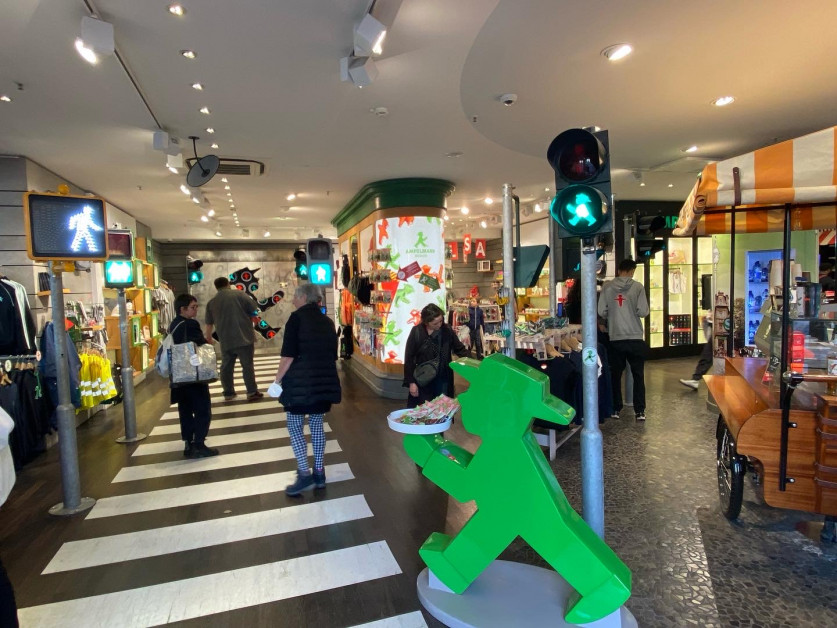
Berlin has always had an alternative vibe ever since the nightclubs of the 20s, and it continues to do so with art, culture and fashion. As I said at the top, there is always something new to see every time you visit, and Hidden Berlin is patiently waiting with its arms open wide.
All images (C) Andy Mossack except Berlin From Below Images © Berliner Unterwelten e.V. / Holger Happel.
Tell Me More about Berlin Secret Places
For more information on visiting Berlin including my suggestions, please go to VisitBerlin Berlin’s official tourist site. E: hello@visitBerlin.de
Berlin Welcome Card and Museum Pass

An absolutely essential purchase when visiting Berlin is a multi-day Berlin Welcome Card giving you free travel on trains, buses and some river cruises depending on the card you get. You’ll also get up to 50% off entry to many attractions too. The Museum Pass is another essential purchase if you intend to visit multiple museums during your stay.
Recommended Hotels in Berlin
So/Berlin Das Stue This arty boutique hotel used to be the Danish Embassy back from 1939 – 1978. It has a mixture of rooms in the original building and in a new extension. The hotel is in the embassy district and pretty central, adjacent on one side to the Berlin Zoo (some rooms face out to the animals), and others face the Tiergarten, Berlin’s equivalent of Central Park.
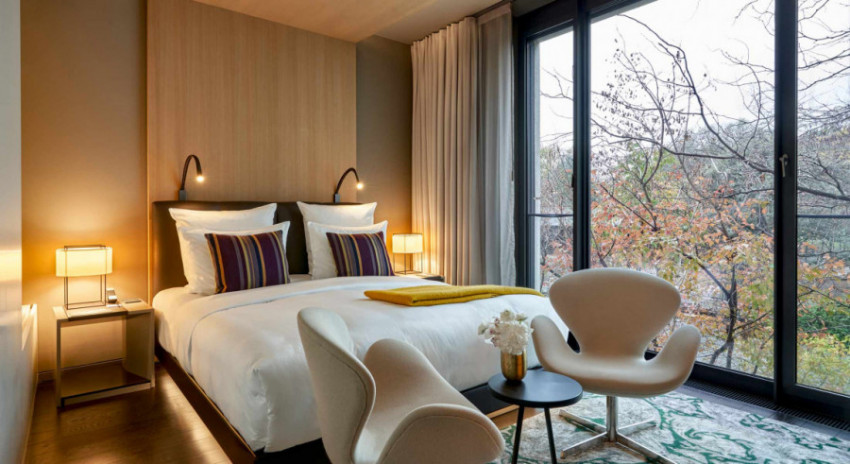
Not quite city centre but near enough and you get some green space to wander around too. There’s a spa, pool, and gym, and plenty of places to sit and gaze at pieces of art. Excellent breakfast.
The Westin Grand Berlin Right in Berlin’s historic centre just a few minutes’ walk from the Brandenburg Gate, this is a building with a very colourful past. It was once the poster hotel for east Berlin in the 80s owned by the GDR who heralded it as the most luxurious in the city. Its guest list is a who’s who of famous faces, so no wonder the infamous GDR were keen to have them there.
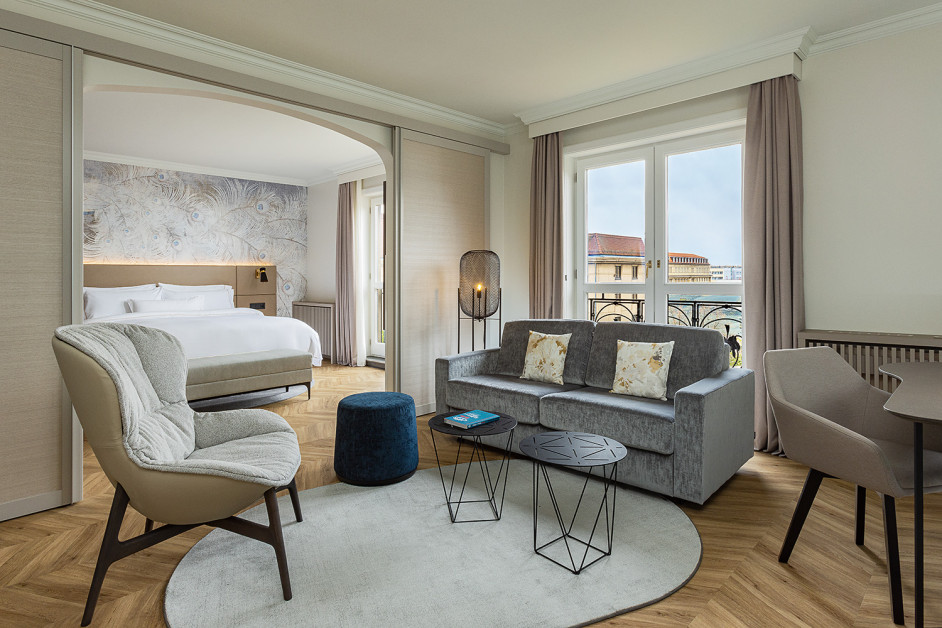
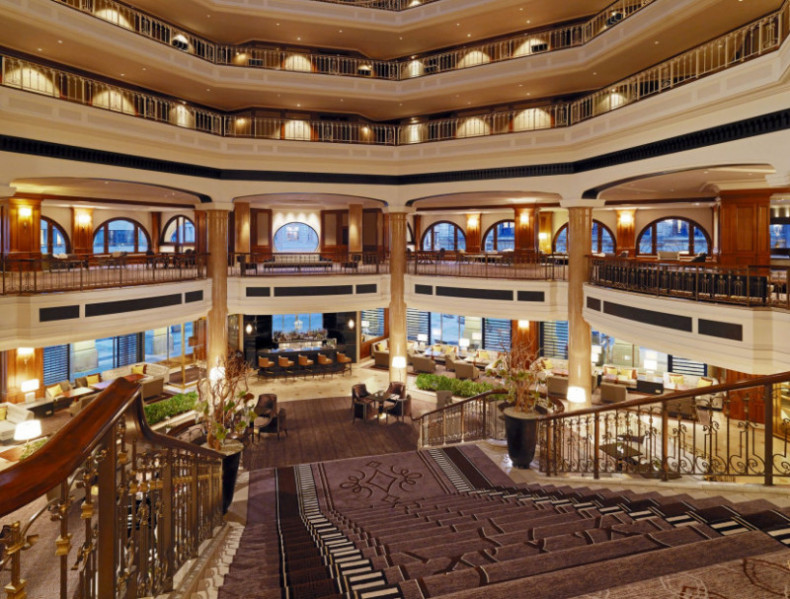
The huge lobby and sweeping staircase are the most famous features and have featured in numerous movies. Many of the classic rooms have now been beautifully refurbished. Perfect position on the corner of Unter Den Linden and Friedrichstrasse.
Where to eat in Berlin
Brasserie Colette by Tim Raue French-inspired fine dining from a chef who is red hot on the gastro scene. Some highly inventive dishes in a bubbly room with excellent service.
Frederick’s Really impressive new resto in the heart of Potsdamer Platz at the Sony Centre, right next to the Panorama Punkt tower. Very memorable interiors reminiscent of a decadently swish hotel in the 20s. Sharing plates filled with top-quality food and a buzzing vibe.
Hummus and Friends An excellent lunch stop on Oranienburger Strasse in the Jewish district. Lots of homemade hummus in different flavours with huge salads and fresh hot pitta.
Ganymed Brasserie A proper old fashioned French brasserie specialising in grilled meats and fish in a building that has been a restaurant since the late 1800s. Right next to the River Spree with waterside tables in summer. Good value, and if you’re a meat eater the chateaubriand is excellent.
Getting to London Stansted
Stansted Express runs every 30 minutes between London Liverpool Street and Stansted Airport. Book online in advance and pay from just £9.70 for a one-way ticket. For the cheapest tickets, book direct at Stansted Express

